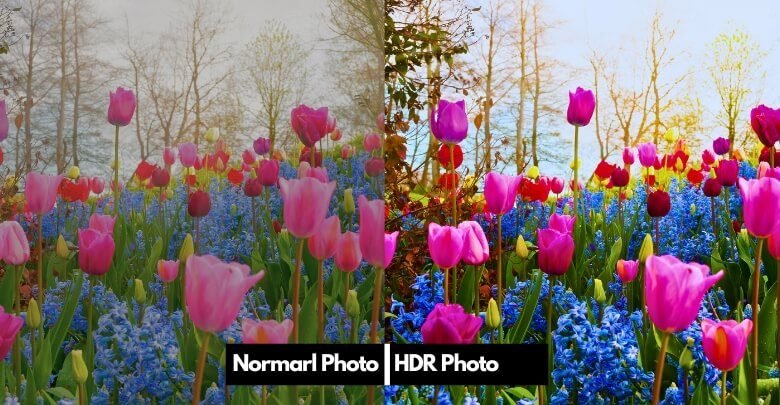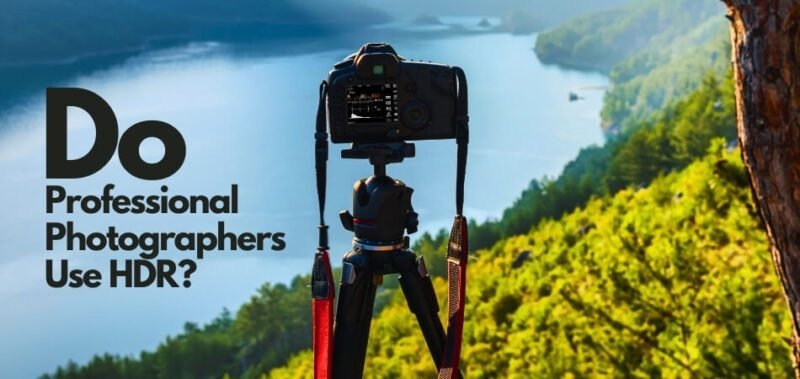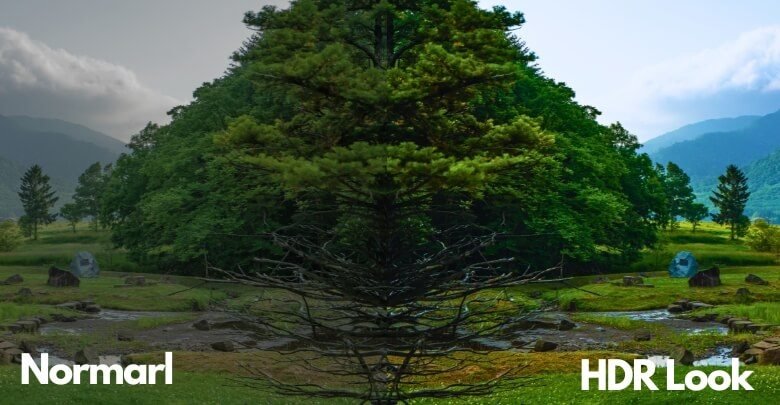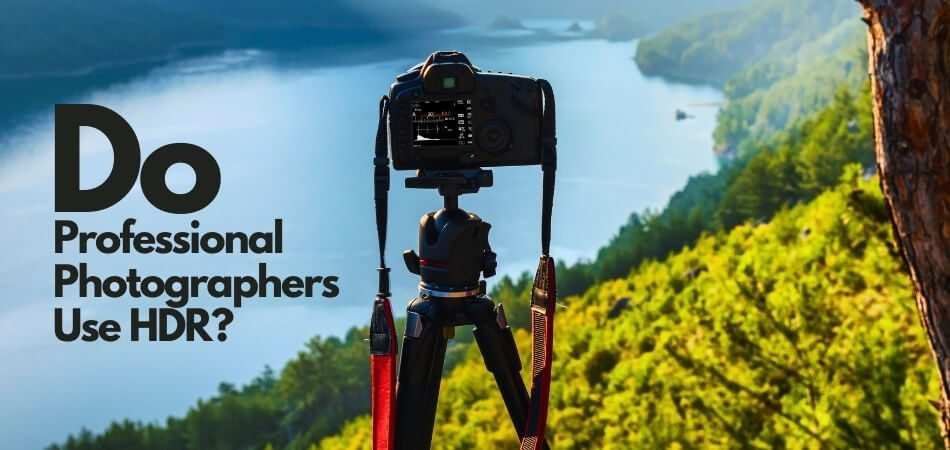HDR (High Dynamic Range) photography captures a wider range of light and detail than standard photos, making it an essential technique for stunning visuals. But the question is: Do professional photographers use HDR?
Yes, they do, this powerful tool allows them to capture and present a wide dynamic range, especially in challenging lighting conditions. Whether it’s a vibrant sunset or poorly lit interior, HDR ensures that both the brightest highlights and the darkest shadows are beautifully rendered.
Curious to learn more about how professionals use HDR in their work? Take a look into the rest of the article to discover the benefits, techniques, and tips from the experts.
How Does the HDR Affect a Photo?
HDR significantly beautifies photos by balancing light and shadow, bringing out details often lost in traditional shots. This technique merges multiple exposures to create one stunning image, showing a scene’s full dynamic range. Colors appear richer, and textures become more defined, resulting in a visually striking photo. Photographers often use HDR to capture beautiful scenery or detailed architectural components.

However, using HDR photo editing services can further refine these images, ensuring the final product is polished and professional. These services expertly balance the various elements of an HDR photo, removing any potential issues such as ghosting or unnatural halos. By using professional HDR photo editing, photographers can achieve superior image quality. This makes their photos stand out in any context, whether for personal use or commercial purposes.
Do Professional Photographers Use HDR?
Yes, professional photographers do use HDR. This technique is very useful for capturing a wide dynamic range in challenging lighting conditions. By merging multiple exposures, HDR creates visually stunning images with rich detail and vibrant colors.

Lighting Conditions Are Challenging
HDR is essential when lighting conditions are tough, such as during sunrise or sunset. These times of day present a high contrast between light and dark areas. HDR helps balance these contrasts, ensuring all details are visible. Professional photographers depend on HDR to handle these complex lighting situations effectively.
Capturing Landscapes
Natural settings often have varying light levels, making HDR perfect for these shots. From bright skies to shadowed valleys, HDR captures it all. It enhances colors and details, creating breathtaking images. Many landscape photographers and celebrity photographers use HDR to capture nature’s full beauty.
Shooting Interiors
Interior photography can benefit greatly from HDR, especially in rooms with windows. The contrast between indoor light and natural light is challenging. HDR balances this contrast, ensuring both indoor and outdoor details are visible. This technique is popular for real estate and architectural photography.
Creating Artistic Images
Some photographers use HDR for its artistic effects. It allows for creative manipulation of light and color. The result can be a unique, surreal look that stands out from the rest. HDR provides the ability for photographers to express their artistic creativity uniquely.
Photographing Events
Event photography often involves unpredictable lighting, such as in concerts or weddings. HDR helps capture both the bright stage lights and the dimmer background. This ensures every moment is clearly visible and well-balanced. Photographers use HDR to produce stunning event photos with rich detail.
Documenting Cityscapes
Cityscapes, especially at night, can benefit from HDR techniques. The bright lights of buildings and dark streets create high-contrast scenes. HDR balances these contrasts, capturing vibrant urban images. Cityscape photographers use HDR to bring out the full beauty of a city.
Enhancing Real Estate Photos
Real estate photography requires showcasing properties in the best light possible. HDR captures both indoor and outdoor details, making homes look inviting. It contributes to the overall appeal of the property photos. Real estate photographers use HDR to make listings stand out.
Creating Marketing Content
Marketing content often needs to be visually striking to capture attention. HDR makes images pop with vibrant colors and sharp details. This can be especially useful for advertising and social media content. Marketers depend on HDR to create eye-catching visuals that engage audiences.
Photographing Portraits
Portrait photography can benefit from HDR, especially in varying light conditions. It ensures that skin tones and background details are well-balanced. This technique can increase the overall quality of the portrait. Photographers use HDR to create stunning and natural-looking portraits.
Shooting for Magazines
Magazine photography demands high-quality, visually appealing images. HDR helps in capturing detailed and vibrant photos that stand out. It is especially useful for cover shots and feature articles. Magazine photographers usually use HDR to deliver eye-catching images that grab readers’ attention.
Creating Travel Photography
Travel photographers encounter diverse lighting conditions across different locations. HDR helps in capturing the full nature of these varied scenes. It ensures that every detail, from bright skies to shadowed alleys, is visible. Travel photographers use HDR to document their journeys beautifully.
Doing Product Photography
Product photography requires capturing fine details and true colors. HDR helps improve the clarity and visual appeal of product images. This makes the products look more attractive to potential buyers. Product photographers use HDR to create high-quality images for advertising and online stores.
How Does HDR Blending Benefit Your Photograph?
HDR blending can significantly enhance your photographs, providing a unique blend of detail, color, and balance. By merging multiple exposures to capture the full dynamic range of a scene, the impact of HDR on photo quality becomes evident. This technique is invaluable for both amateur and professional photographers looking to elevate the quality of their work.

Improved Detail
HDR blending brings out details in both shadows and highlights, showing textures and details often lost in standard photos. It combines multiple exposures to ensure no part of the image is too dark or too bright. This process makes your photos look richer and more immersive, providing a depth of detail that draws viewers in. You’ll notice finer details, like the texture of a leaf or the grain of wood, which make your images more lifelike.
Balances Light and Dark Areas
Balancing light and dark areas in a photo can be challenging, especially in scenes with high contrast. HDR blending effectively manages this by merging different exposures, ensuring that both bright and dark regions are well-exposed. This technique results in a more visually balanced and appealing image, where the viewer can appreciate the full range of tones. This balance is particularly useful in situations like sunset landscapes or indoor shots with bright windows.
Improves Color Vibrancy
Colors in HDR images appear more vibrant and true to life, making your photos more engaging. The technique captures a wider range of colors and tones, enhancing the overall color vibrancy of the image. This makes your photos pop and appear more dynamic, drawing the viewer’s eye to the vivid details. Better color vibrancy is particularly beneficial for capturing stunning landscapes, vibrant cityscapes, or any scene where color plays a crucial role.
Adds Depth to Images
HDR blending adds a sense of depth to your photographs by capturing the full range of light, creating a more three-dimensional look. This depth makes your images appear more realistic and lifelike, providing a sense of immersion for the viewer. It allows different elements of the photo to stand out, giving a more layered and complex visual experience. Depth in photos can draw viewers in and hold their interest, making them more likely to appreciate the finer details.
Perfect for High-Contrast Scenes
High-contrast scenes often lose detail in shadows or highlights, but HDR blending solves this problem by combining multiple exposures. It ensures all parts of the scene are well-lit and detailed, making high-contrast scenes more visually pleasing and complete. This technique is especially useful for capturing dramatic landscapes, precise architectural details, or any scene with a wide range of light levels. It allows photographers to present a more accurate and detailed representation of the scene.
Ideal for Artistic Expression
HDR provides unique opportunities for artistic expression, allowing photographers to experiment with light and color creatively. The results can be dramatic and visually stunning, providing a tool for photographers to push creative boundaries. By manipulating exposure and color, photographers can create surreal or hyper-realistic images that stand out. HDR blending thus opens up new possibilities for creativity and artistic exploration.
Boosts professionalism
Using HDR can significantly improve the professionalism of your work, showing attention to detail and technical proficiency. High-quality images can impress clients and audiences alike, making them particularly beneficial in competitive fields like real estate and marketing. HDR images demonstrate a level of expertise and commitment to quality that can set you apart from others. This professionalism can lead to better opportunities and recognition in your field.
Reduces Post-Processing Time
HDR blending can reduce the need for extensive post-processing because the technique itself captures a balanced and detailed image. This means less time spent adjusting shadows and highlights, making the editing process quicker and more efficient. By getting the exposure right in-camera through HDR, photographers can focus on other aspects of editing. This efficiency is particularly valuable for photographers with tight deadlines or high volumes of work.
Incorporating HDR blending into your photography toolkit can dramatically improve the quality and appeal of your images. By capturing details, balancing light, and improving color vibrancy, HDR comes with numerous benefits. Whether you’re a hobbyist or a professional, HDR blending can help take your photography to new heights.
Are There Any Drawbacks Of HDR Blending?
Yes, there are some drawbacks to HDR blending, despite its many benefits. While HDR can look better in photos, it can also introduce issues if not used correctly. You can use HDR more effectively if you understand these drawbacks.
- Overprocessing Look: Overdone HDR can create an unnatural, exaggerated look. It’s important to use HDR gradually to maintain a realistic appearance.
- Increased Noise: HDR blending can sometimes increase noise in your photos. This is especially true in low-light situations where multiple exposures are used.
- Ghosting Effects: Moving subjects can cause ghosting effects in HDR images. This occurs when different exposures capture subjects in different positions.
- Time-Consuming Process: HDR blending requires multiple shots and post-processing. This can be time-consuming, particularly for photographers working on tight deadlines.
- Requires Tripod: To avoid alignment issues, HDR often needs a tripod. Handheld HDR shots can result in blurry or misaligned images.
- Storage Demands: HDR photography involves storing multiple high-resolution files. This increases storage requirements and can be a burden on your storage devices.
- Software Dependence: Effective HDR blending requires good software. Not all editing programs handle HDR equally well, affecting the final quality.
Bottom Lines
HDR blending is undeniably a powerful tool in photography, offering excellent detail, balanced lighting, and vibrant colors. It’s no wonder that professional photographers use HDR to capture eye-catching visuals in challenging conditions.
The technique’s ability to bring out the fine details and maintain realism makes it indispensable in various genres, from landscapes to interiors. However, while HDR brings numerous benefits, you should use it properly to avoid overprocessing or ghosting effects.
Despite its drawbacks, the consensus remains: professional photographers largely depend on HDR to advance their photographic skills and deliver exceptional imagery. So, do professional photographers use HDR? Absolutely, and with good reason, there is no doubt it is transforming in the photography industry.
